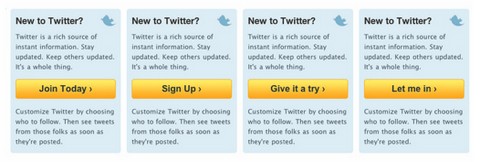An Overview of A/B Testing
The world of websites is expanding rapidly and this has given rise to the need of creating good and interesting websites. How does one even make out whether it would lead to good and quality conversion rates? What would you do to make your website popular apart from the other Internet marketing strategies, analytics, SEO, and usability? What about A/B testing?
This post is an attempt to provide you with an ultimate guide on the W’s and H’s of A/B testing.
Now, cutting short the long communication threads, let’s begin the very first question of the post:
What Is A/B testing?
As the name suggests, A/B indicates to the idea of making a choice. In the world of web design, it is a method to figure out the performance of two individual designs for a specific purpose. Improving upon the conversion rate is the specific goal of testing, and these tests are generally for the design elements to be able to figure out the response of the visitors.
Let’s take it in a more general way. For instance, you have two designs for your website and cannot choose between the two even if you have a fair knowledge of all the points that lead to a good and quality web design. Then, you put both on the web and conduct an experiment to be able to come up to a conclusion that would serve the needs of a successful website. You calculate the conversion rate by comparing the number of visitors on both the sites and the number of users who had actually signed up. The more the conversion rate, the better the design.
Therefore, you get a beforehand information and a more reliable result to which one is better, and would yield profitable business.

What’s the Use?
There have always been articles, posts, studies and debates to figure out what has detached the visitors from the website? What makes them drive away from the site? In the light of proving where your website actually stands, this test involves the testing of the specific elements. The elements could be the product description, navigation menus, layout, theme or colours, headlines or be it anything.
Since, we have already called it as an experiment; therefore, it ought to be accompanied by observing the change in the behaviour of the visitor with the change in the situation. There is no doubt to the fact that the process is actually quite complex, but tends to provide quality-oriented and reliable results. It actually lessens the unnecessary hassles of risking the rapport of your site at the first place.
Another major benefit that these freelance web designers and even the professional web design services can actually leverage from the use of a test is that you would have a solid and concrete proof to what actually can make your business profitable. Undoubtedly, there have been a stiff competition in the web design and development industry and to be able to build up a long term relationship with your clients, this test would definitely prove to be an important part of the designing process.

How to do it?
For testing, there are actually few simple steps that tend to be followed with a certain set of dos and don’ts of conducting a true A/B test.
The first and the foremost step that is so pretty obvious that you need to have a set of two designs, which ought to be randomly shown to the target visitors or be it to a particular set of test audience. The second step wherein you actually present the two designs in front of the subjects (psychological term for the test audience), you need to keep the following things in mind:
– Make sure that you ought to change one element at a time and then, carry out the test. You may test anything— it could be the header, the navigation or the content. Everything should be one at a time. It ensures correct and accurate results. You get to know the test result of the individual items and where does website design lacks.
Each and every element would be accompanied by the individual conversion rate and hence, it can be calculated.
– Since, the individual elements need to be tested; it is but obvious that it would take considerable amount of time. So, be prepared that it is going to take time.
– Make sure that you keep a track record of the variations that you choose for a user and avoid the situation wherein you present it to the same user a different price or design or offer.
– The element to be tested should be consistent throughout the site. It should not differ from one page to another.
– Always test both the versions at the same time, splitting the traffic both the sides and then, compare the results for different variations.
However, we still have an option of the multivariate testing wherein we can test with 5 to 6 designs keeping the number of the elements consistent. In addition to it, there are different tools that can be administered for the A/B testing as tools have always made our task easier and comfortable to work with them. So, we have listed some of the A/B testing tools to have a complete guidance on the tests—
1. Google Website Optimizer is a free tool that allows you to run A/B testing and even multivariate tests with perfect guidelines for the same.
2. Press9 A/B Testing Joomla! Plugin is a tool that conducts the test in a Joomla! based website.
3. There is ABtests.com that shares the views and several samples that have been conducted, tried and tested so that the others have a fair idea of the previous results and to be able to get an idea from that.
4. Split test calculator allows you to perform mathematical calculations to be able to attain the conversion rate, and statistical data for comparison.
5. Amazon Mechanical Turk helps you find the visitors/ the subjects to carry out the experiment.
In a nut shell, A/B testing not only helps the small websites, but has been a popular method of testing with the large websites as well. Though, it is a time consuming test but to be able to leverage the large profits of a global economy through the first hand medium, these tests would lead you to have a handsome deal in the world of websites and build a tested long-term relationship with the potential customers.
About the Author
This post is shared by PixelCrayons, a creative web design and development agency that specializes in custom web design & development, PSD to HTML service, CMS & E-Commerce solutions.




